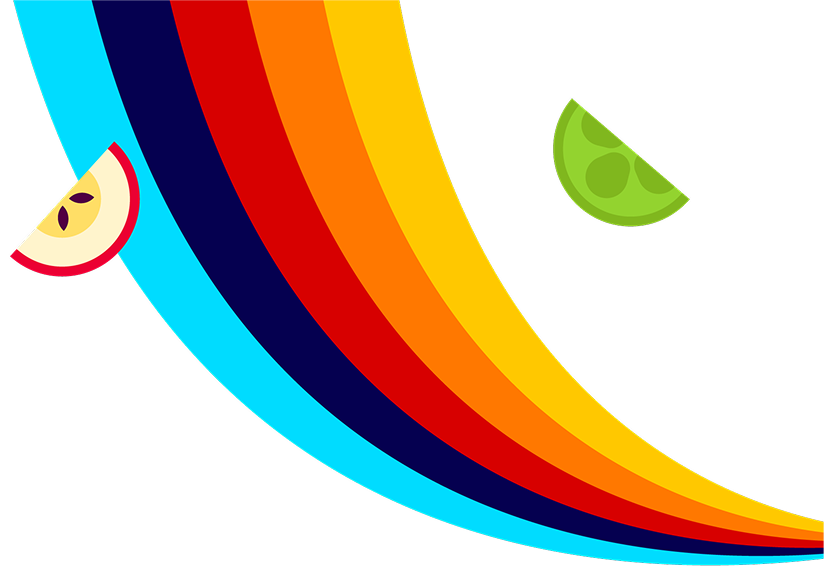Welcome to the quick quizzes answers page.
Find out the answers to each of our quick quizzes below. Whenever you test yourself with a new Get Set to Eat Fresh quick quiz, you will be able to find the answers here. Just make sure you complete the questions first - no peeking!
Quick quizes: the questions
Quick quiz - Home Pride
Quick quiz - Winter Games
Quick quiz - Bready Set Bake!
Kevin’s Christmas (and carrots) quiz
Quick quiz - guess the weight
Quick quiz - sort your seasons
Quick quizzes: the answers
Home Pride Answers
In this quick quiz we tested your knowledge of national dishes in past and present hosts of the Olympic Winter Games. How many did you recognise?
- C. Beijing, China
- A. Oslo, Norway
- C. Grenoble, France
- B. Salt Lake City, USA
- A. Torino, Italy
- A. Vancouver, Canada
- B. PyeongChang, South Korea
- B. Sochi, Russia
- B. Innsbruck, Austria
- A. St Moritz, Switzerland
Winter Games
For this quiz we tested your knowledge of the Winter Olympic Games. How did you do?
- A. True. The first Olympic Winter Games were held in 1924 and hosted by France in Chamonix.
- A. Beijing will become the first city to have hosted both the winter and summer Olympic Games. This means that some of the venues used for the Beijing 2008 Olympic Summer Games will be used as well as some new stadiums!
- B. 91. National Olympic Committees will be competing in the Beijing 2022 Olympic Winter Games, including entries from Haiti and Peru who did not participate in the 2018 games.
- A. Hydrogen. Hydrogen will fuel the torch on its relay, this will make it emission-free and is one step the Beijing Winter Games have taken to make the Games greener and more sustainable.
- B. Ice. Bing has several meanings, but the most common is ‘ice’. It can also symbolise both purity and strength. The second part of the mascot’s name ‘Dwen Dwen’ means lively or robust and also symbolises children. The mandarin for panda is ‘xiongmao’(熊猫). Find out more at: olympics.com/en/beijing-2022/mascot
- B. 5. Team GB won 5 medals in both 2014 and 2018 and are targeted to win between 3 and 7 medals this time around!
- A. True. Lizzy Yarnold won a silver medal in the skeleton in the Olympic Winter Games Sochi 2014, and then won a gold medal in the Olympic Winter Games PyeongChang 2018.
- B. 3. The Winter Games will be separated into 3 ‘clusters’ of locations for venues. These clusters will be in Beijing which will hold events such as curling, ice hockey and speed skating, Yanqing (a district of Beijing) which will hold events such as bobsleigh and alpine skiing as well as hosting around a third of the athletes and officials in the Olympic and Paralympic Village and Zhangjiakou (a city bordering Beijing) will hold events such as biathlon, skiing jumping and snowboarding as well as accommodating the other estimated two thirds of athletes and officials for the Games.
- C. Skateboarding. Both figure skating and skeleton are official Olympic Winter sports, however skateboarding only became an Olympic summer sport at the Tokyo 2020 Games.
- B. 15. There will be 15 sports in the Beijing 2022 Olympic Winter Games, including speed skating, ice hockey and curling.
To find out more about the Olympic Winter Games, check out our Winter Games Challenges.
Bready Set Bake!
For this quiz we tested your knowledge of breads from around the world. How many did you recognise?
- Bagel. First made in Jewish communities in Poland, the bagel (or beigel) gets its unique texture as the dough is boiled before it is baked.
- Baguette. A baguette is a long thin loaf of French bread.
- Tiger bread. Tiger bread originated in the Netherlands. The tiger pattern is made by painting a rice paste on the bread before baking.
- Naan. An oven-baked leavened flatbread, popular in South, Central, and West Asia. Traditionally cooked in a tandoor (a clay oven).
- Pita. Is a round leavened flatbread common in the Middle East, Mediterranean and neighbouring areas. As it cooks steam puffs up the dough, leaving a pocket in the middle.
- Cornbread. Cornbread is the name given to any quick bread (bread risen with a raising agent like baking powder rather than yeast) made with maize or cornmeal. It is traditional in Native American cooking and is now common in cuisine in the United States, particularly the south.
- Tortilla. A thin flatbread made of wheat or corn flour. It originated in Mesoamerica (historical region of North and central America before colonisation) and remains popular across South, Central and North America today.
- Rye bread. Common in many Northern, West and East European countries, rye bread is any bread made from rye flour. It is normally darker, denser, a stronger flavour and higher in fibre than other breads.
- Baozi (steamed filled bun). Baozi (or bao) is a type of filled bun popular in many Chinese cuisines. They can be filled with meat, vegetables or sweet fillings such as red bean. It gets its unique texture and look because, unlike many breads, it is steamed rather than baked.
- Injera (fermented flatbread). Injera is a sour, fermented flatbread used in both Ethiopian and Eritrean cooking. Traditionally a variety of stews and salads are served on the injera, with smaller pieces of the bread used to pick up the food.
Bready Set Bake Challenge: look back at the multiple-choice options for the quiz. Are there any breads you don’t know? Find out what you can about these breads and create your own quiz!
Kevin’s Christmas (and carrots) quiz
Christmas food around the world
- French toast. Rabanadas is known to English speakers as French toast. It’s traditionally made with old bread, dipped in milk and eggs, fired and sprinkled with sugar and cinnamon.
- South Korea. While preparing for the Olympic Winter Games in PyeongChang 2018, Team GB athletes will definitely be able to try a delicious variety of foods!
- False. Stuffed cabbage leaves are a traditional dish, but they are usually filled with mince and rice, often topped with a lemon sauce.
- China. The Chinese Mandarin word for Christmas Eve is ‘Ping'an Ye’ (meaning peaceful evening), which sounds like the Mandarin word for apple ‘píngguǒ’. Therefore, although Christmas is not widely celebrated in China, it has become popular to give friends an apple on the 24 December.
- Eel. On Christmas Eve Southern Italians traditionally eat many different types of fish (sometimes up to twenty dishes!), but ‘Il Capitone’, a dish made with fried eels is a favourite.
Kevin’s quick-fire carrot quiz
- False. In the past carrots were more commonly purple or red. The orange variety of carrot was bred in Holland in the 1800s to honour the royal House of Orange.
- True. Eating a huge amount of carrot can sometimes cause a person's skin to turn yellowish orange – a condition known as carotenemia. However, it is only caused by eating a massive number of carrots and is easily fixed by cutting back on the vegetable!
- False. Contrary to popular belief, carrot tops are edible. They can have a bitter taste when raw, so are best sautéed and softened.
- True. In the UK we consume about 700,000 tonnes of carrots each year. That’s approximately 100 carrots per person!
- False. Carrots are a root vegetable. However, carrots are the second sweetest vegetable in the world, only beetroot contains more natural sugars.
Quick quiz - guess the weight
What volume of fruit and vegetables was needed to feed athletes and staff throughout the London 2012 Olympic and Paralympic Games?
The answer to our first quick quiz was: c) 330,000 kilograms
Quick quiz - sort your seasons
For this quick quiz, we challenged you to match twelves fruits and vegetables to their best seasonal month. The correct answers are below, how many did you get right?
| Month |
Fruit/ vegetable |
| January |
Carrots
|
| February |
Leeks
|
| March |
Spring greens
|
| April |
Cauliflower
|
| May |
Asparagus
|
| June |
Strawberries
|
| July |
Cucumber
|
| August |
Rasberries
|
| September |
Runner beans
|
October |
Sweetcorn
|
| November |
Potatoes
|
| December |
Brussel sprouts
|




